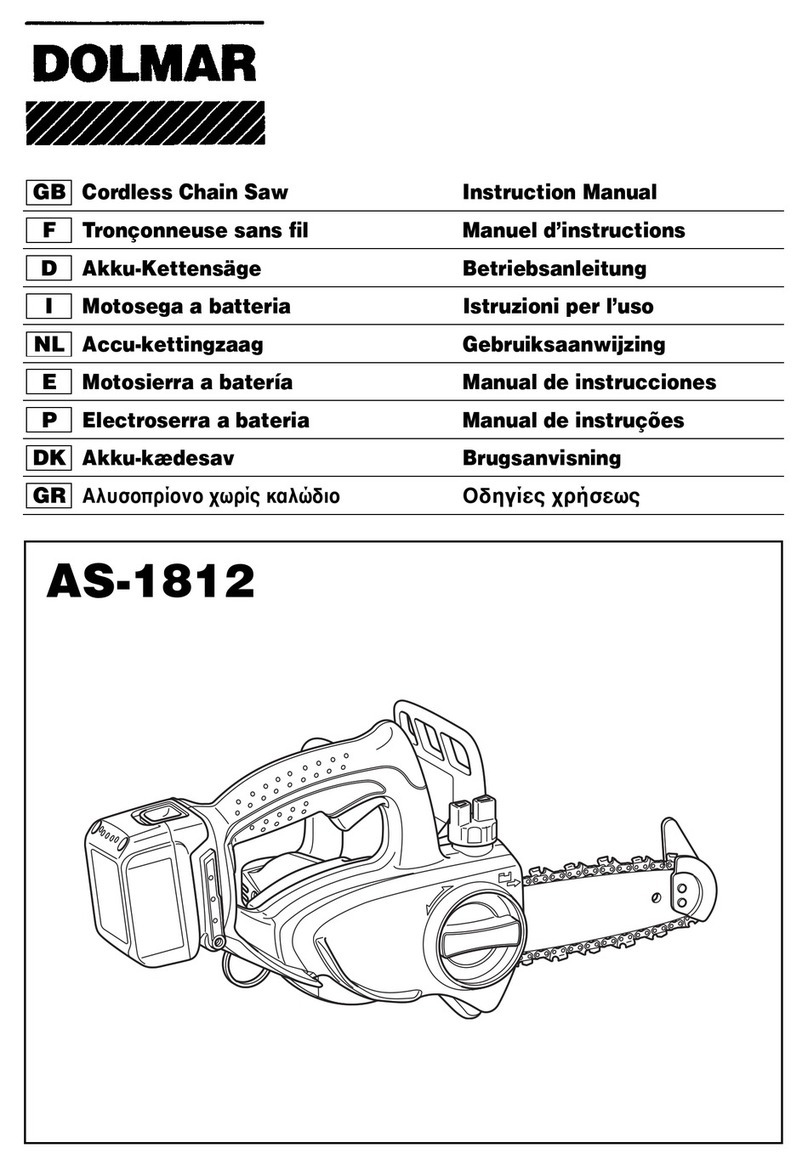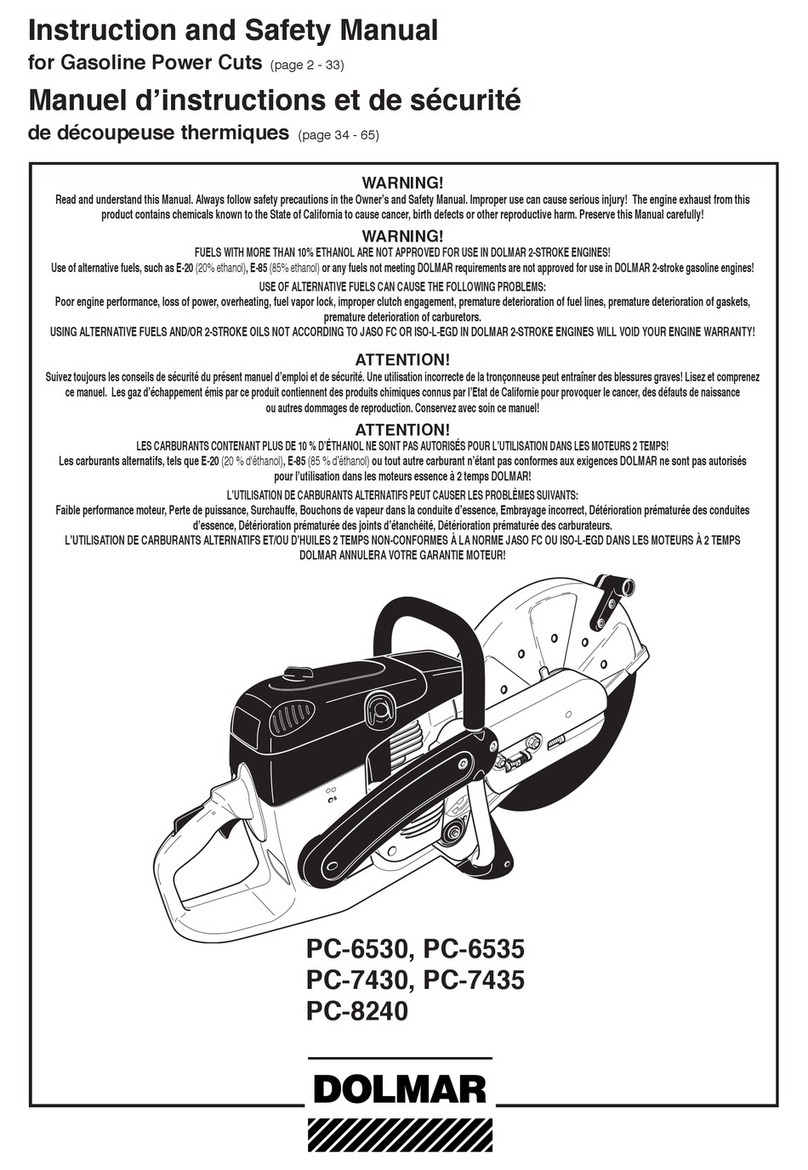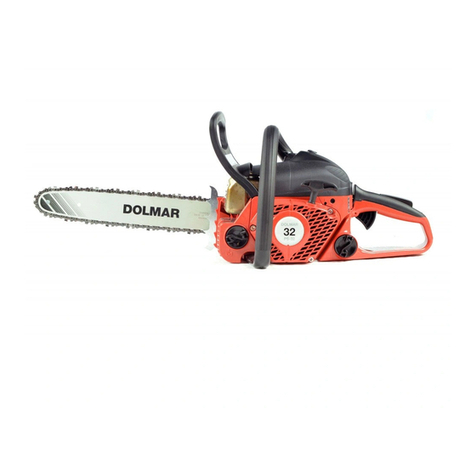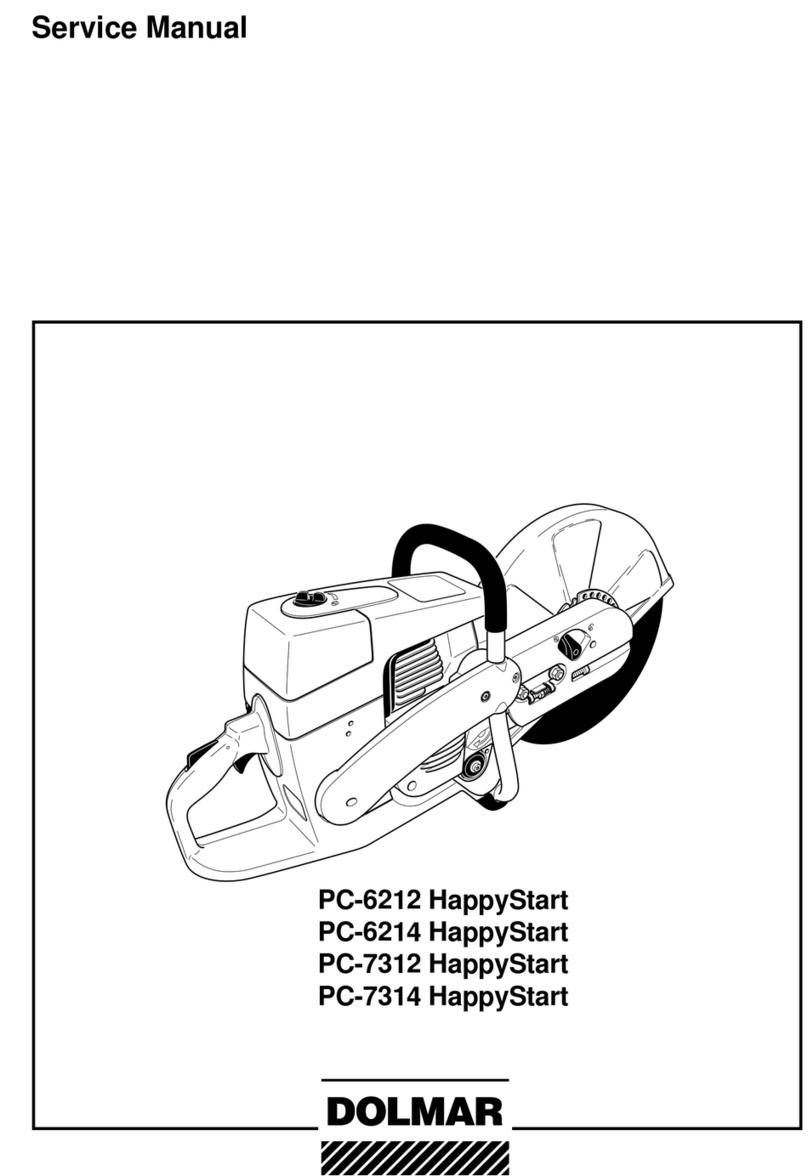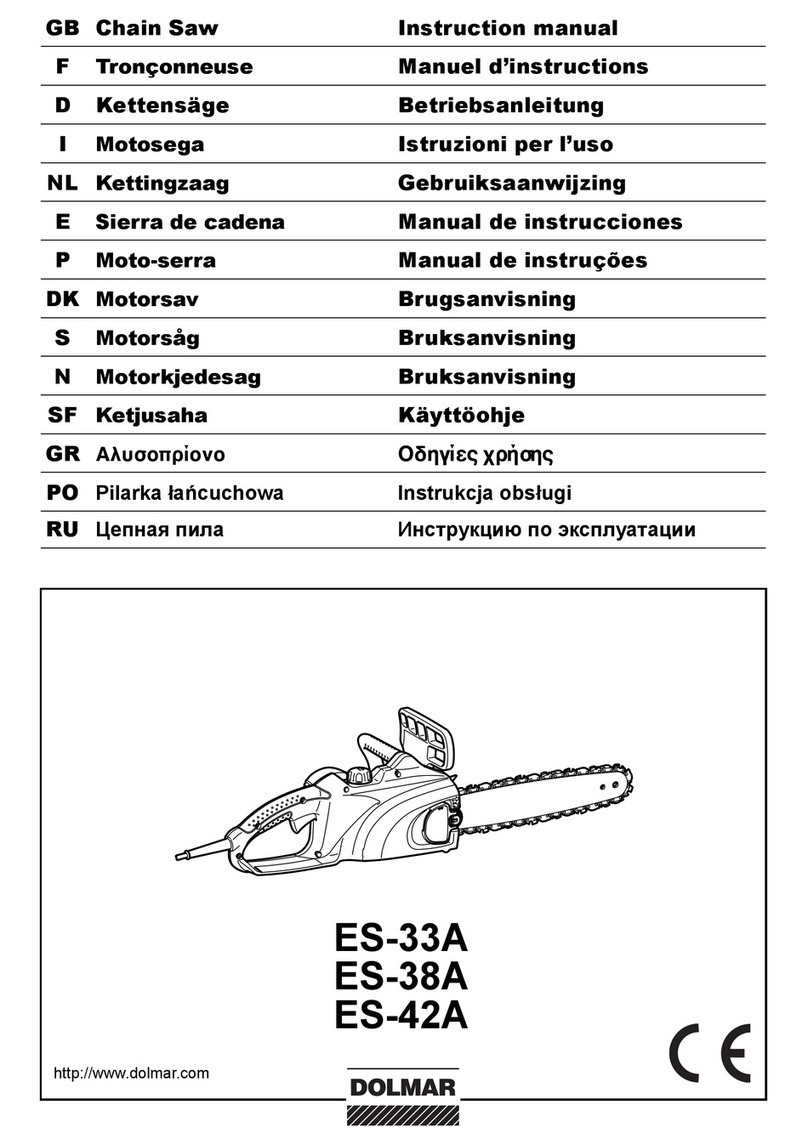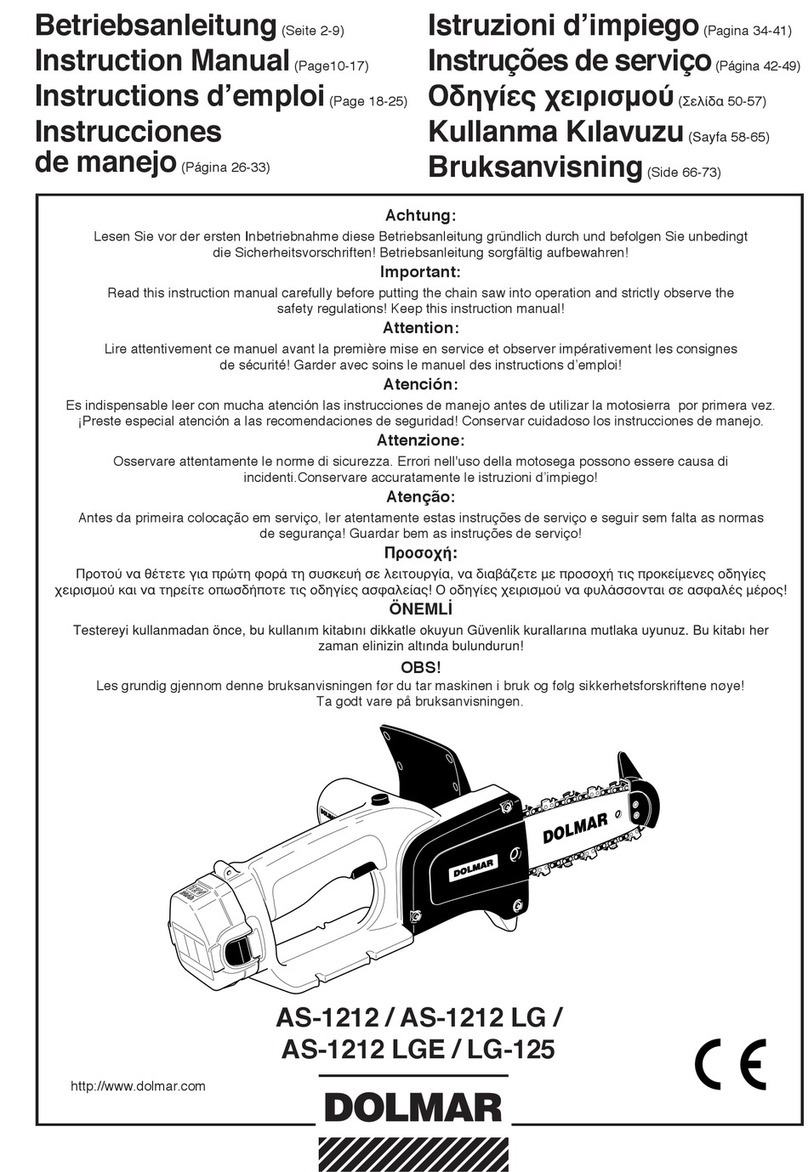
2
Table of contents Page
Packing ................................................................................2
Delivery inventory ..............................................................3
Symbols ..............................................................................3
SAFETY PRECAUTIONS
General precautions ....................................................... 4
Protective equipment ......................................................4
Fuels / Refuelling ............................................................5
Putting into operation ......................................................5
Kickback .........................................................................6
Working behavior/Method of working ...........................6-7
Transport and storage .....................................................8
Maintenance ...................................................................8
First aid ..........................................................................8
Technical data .....................................................................9
Denomination of components ...........................................9
PUTTING INTO OPERATION
Mounting the guide bar and saw chain .................... 10-11
Tightening the saw chain .............................................. 11
Chain brake .................................................................. 12
Fuels / Refuelling ..........................................................14
Adjusting the chain lubrication ......................................15
Checking the chain lubrication ......................................15
Starting the engine ........................................................ 16
Cold start .....................................................................16
Warm start ....................................................................16
Stopping the engine....................................................... 16
Checking the chain brake .............................................17
Adjusting the carburetor ..................................................17
MAINTENANCE
Sharpening the saw chain .......................................18-19
Cleaning the brake band and sprocket interior .............20
Replacing the chain catch sleeve ..................................20
Cleaning the guide bar, lubricating the sprocket nose ..20
Replacing the saw chain ...............................................21
Replacing the sprocket .................................................21
Replacing the suction head .......................................... 21
Cleaning the air Þlter .....................................................21
Replacing the spark plug ..............................................22
Replacing the starter cable ...........................................22
Replacing the return spring unit..................................... 23
Cleaning the mufßer ......................................................23
Cleaning the cylinder space .......................................... 23
Instructions for periodic maintenance ...........................24
Service, spare parts and guarantee ..........................24-25
Troubleshooting ...............................................................25
Extract from spare parts list ...........................................26
Accessories ..................................................................26
EU conformity declaration ...............................................27
Thank you for purchasing a DOLMAR product!
Congratulations on choosing a DOLMAR chain saw! We are
conÞdent that you will be satisÞed with this modern piece of
equipment. As the world’s oldest manufacturer of chain saws
- we got our start in 1927 - we have the longest experience in
the industry. This experience shows in every detail of every
DOLMAR chain saw.
The PS-3410 are very handy and robust chain saws with a
new Design.
The automatic chain lubrication with variable-ßow oil pump
and maintenance-free electronic ignition ensure trouble-free
operation, while the hand-saving anti-vibration system and
ergonomic grips and controls make work easier, safer, and
less tiring for the user.
The PS-3410, chain saws are equipped with the latest safety
features and meet all international standards.
They include handguards on both grips, grip safety, chain catch,
safety saw chain, and chain brake. The chain brake can be
actuated manually, and is also inertia-actuated automatically
in case of kickback.
In order to guarantee the optimal function and performance of
your power chain saw and to ensure your personal safety we
would request you to perform the following:
Read this instruction manual carefully before
putting the chain saw into operation for the
Þrst time, and strictly observe the safety regu-
lations!
Failure to observe these precautions can lead
to severe injury or death!
Packing
The DOLMAR chain saw will be delivered in a protective
cardboard box to prevent transport damage.
Cardboardisabasicrawmaterialandisconsequentlyreuseable
or suitable for recycling (waste paper recycling).
